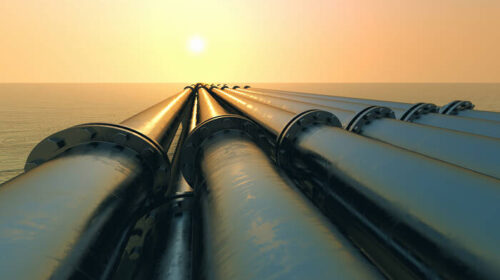A few days back, the Iranian ambassador in New Delhi delivered a very important statement in which he said: “Iran is ready to meet India’s energy needs by launching trade in Indian and Iranian local currencies for export of oil and gas.” According to H H Ali Chegeni, Tehran is also willing to work closely with India to revive and find alternative routes for the stalled Iran-Pakistan-India pipeline project for transporting natural gas to India.
The statement reminds me of the Iran-Pakistan pipeline which we have been hearing about for a long time. Internationally, Iran has the largest natural gas reserves in the world. Iran is also known as the third largest consumption of natural gas in the world after the United States and Russia, which is mainly utilized for meeting domestic needs for electricity generation and heat production.
The Iran–Pakistan gas pipeline (IP Gas) is an under-construction 2,775-kilometre pipeline to deliver natural gas from Iran to Pakistan. The $7.5 billion, 1,700-mile megaproject is also known as the Peace pipeline. The idea to bring people of both countries closer through this initiative was first conceived by a Pakistani civil engineer, Malik Aftab Ahmed Khan, in the 1950s. However, the governments of Iran and Pakistan signed a preliminary agreement in 1995 for construction of a pipeline from the South Pars gas field to Karachi. Later, in February 1999, an agreement between Iran and India was also signed.
After the Islamic revolution, Iran was labelled as an anti-US country. Pakistan was also facing diplomatic pressure from the US and another influential country, having ideological differences with Iran. The internal chaos in Pakistan’s formal tribal areas due to the US-led war against terror was another factor. Ironically, India decided to withdraw from the project after signing a civilian nuclear deal with the US in 2008.
The US sanctions imposed on Iran in 2012 also caused Pakistan to backtrack on the project. However, despite facing several hurdles, the PPP government decided to carry on the project in the best interest of the people of Pakistan. Finally, the construction work on the Pakistani section was inaugurated by then-president of Pakistan Asif Ali Zardari and former president of Iran Mahmoud Ahmadinejad in March 2013. This remarkable achievement under the PPP regime was no doubt a game changer for the entire region.
Zardari was well-aware that this gas pipeline is also very essential for our leading role in the region. In order to provide a route to India, Pakistan will be compensated financially. Similarly, India would have to depend on Pakistan. His vision in this regard further led towards materialization of the China-Pakistan Economic Corridor (CPEC).
Although Iran has completed construction of its part of the pipeline, there were no development updates to the project from our side. Today, our prime minister is praising India’s independent foreign policy, but he is unable to inform what progress has been made on this international project during his tenure. In my view, if the PM had shown serious determination, this project would have been completed on time, and the energy crisis in the country would have been overcome forever. It is a pity that not a single project of public interest has been accomplished in the immature government.
Instead of getting our beloved country into the global politics of blocs, we should practically focus on serving our people. In my view, the success of the peace pipeline is now wholly dependent on the visionary leadership of Asif Ali Zardari to come to power to end the ongoing energy crisis and bring peace in the region. That’s why the parliamentary change in political leadership is very important, otherwise our geo-strategic position will be disturbed in the region if India and Iran succeed in finding an alternate route bypassing Pakistan.







